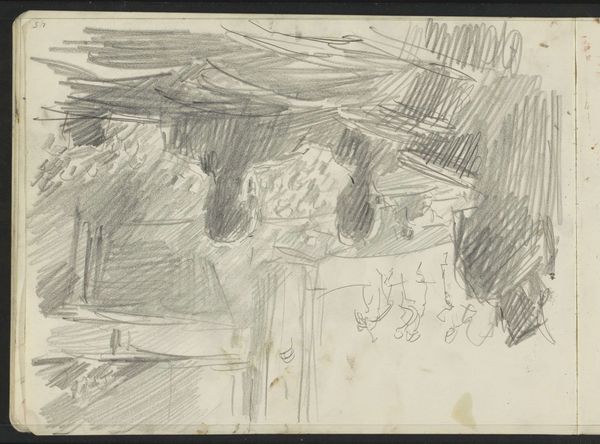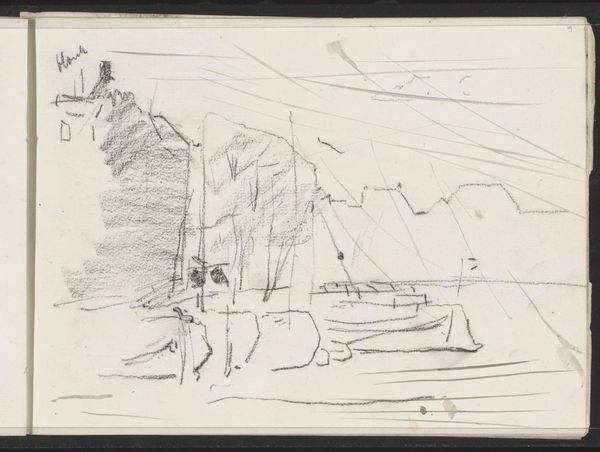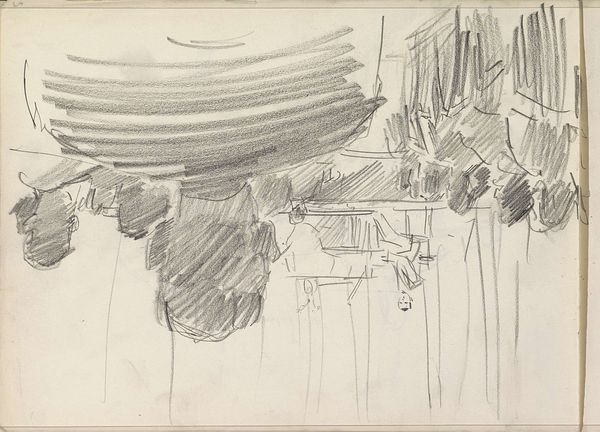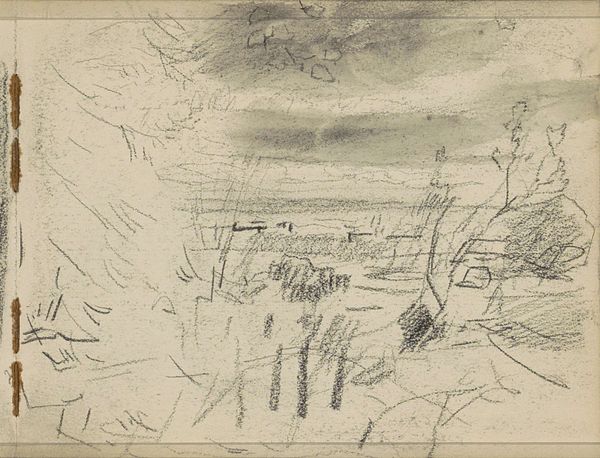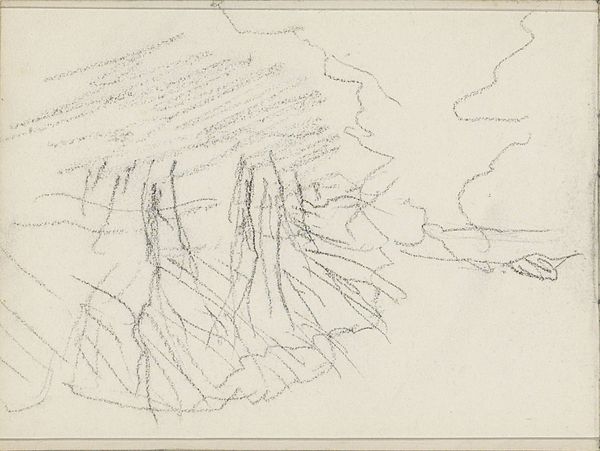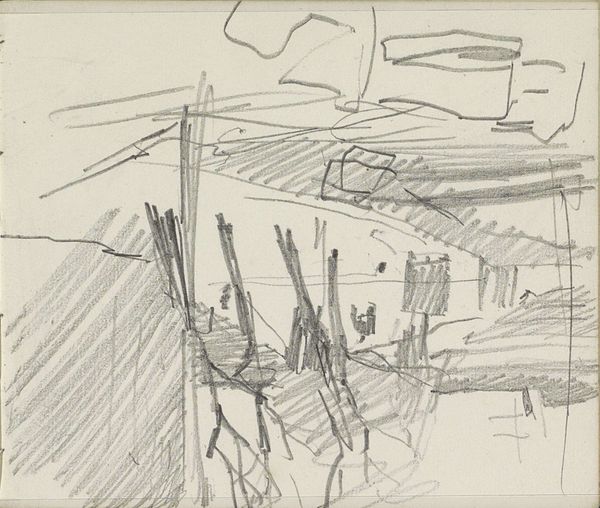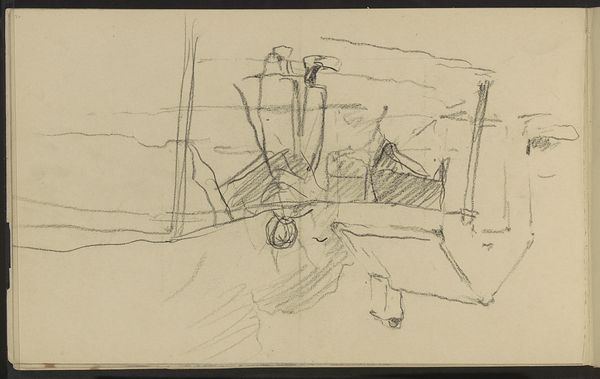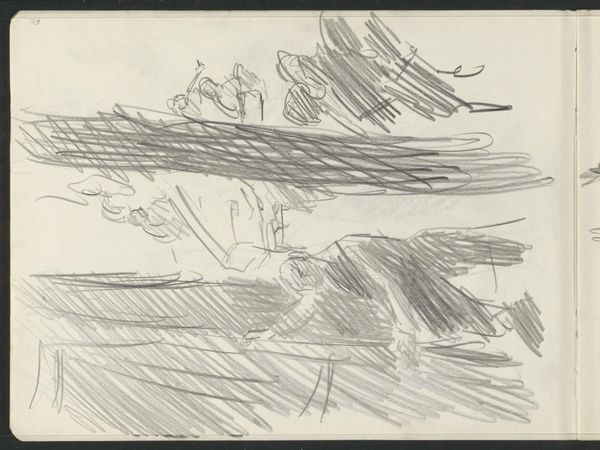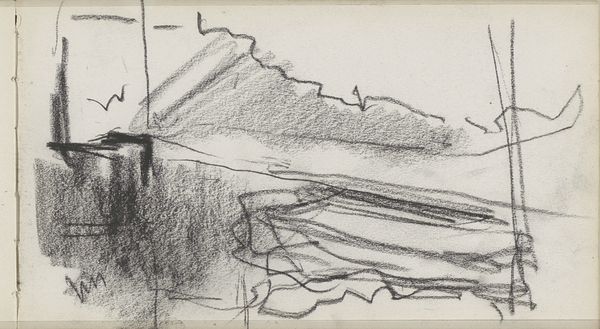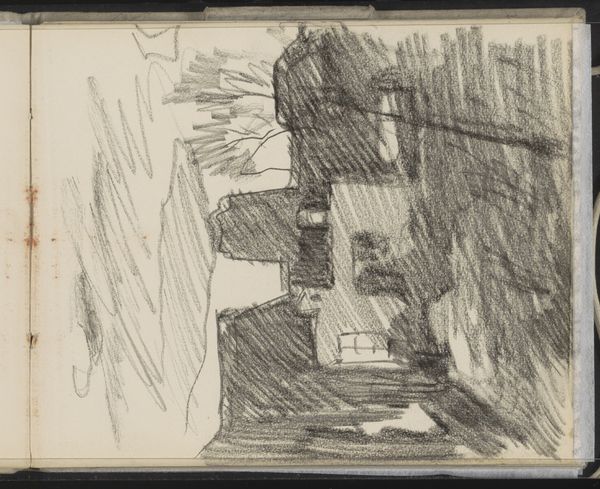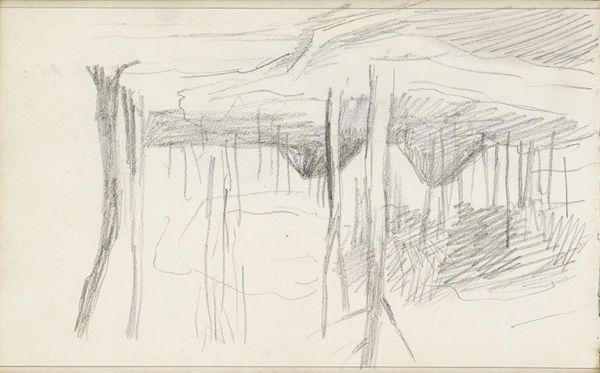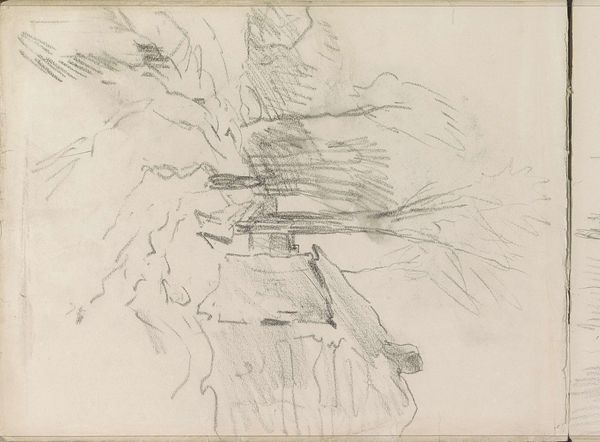
Copyright: Rijks Museum: Open Domain
Curator: This is "Theatervoorstelling," or "Theatrical Performance," by Isaac Israels, dating from around 1915 to 1925. It's a pencil drawing, currently held at the Rijksmuseum. Editor: It feels so fleeting, almost as if Israels was just capturing a quick impression. What strikes me is how little detail there is, and yet I get the sense of being in a crowded theater. What do you see in this piece? Curator: What interests me here is the material reality of the artwork itself – the graphite on paper. Look at how the varying pressure of the pencil creates a range of tones, suggesting depth and shadow. How might the specific qualities of the pencil and paper – their texture, their cost, their accessibility – have influenced Israels' process? Editor: That's an interesting point. I hadn't considered how the choice of materials would impact the artist’s style and what they hoped to achieve with it. It does feel like it encourages that sense of capturing a moment rather than crafting something polished. Curator: Exactly. The sketchiness undermines any notion of a 'finished' or 'precious' artwork. Was this intended for public display, or was it more of a working document? Also consider the social context: Who were the people in this theater, and what role did theater play in society at the time? Were these leisurely drawings, part of a wealthy lifestyle? Editor: So you’re suggesting that the artwork is speaking not just about the subject, the performance itself, but the context of its creation? That the cheapness of the material might have enabled a faster or less careful study, making it more about immediate record than something intended for market? Curator: Precisely. It encourages us to think about art making not as purely aesthetic expression, but as a form of labor and social practice rooted in material conditions. What impact does accessibility of materials have on art as a whole? Editor: It is fascinating to see a raw depiction such as this one from that perspective! I will have to give more thought to that going forward. Thank you. Curator: Absolutely. And it is these insights that allow us to analyze beyond the surface and connect the artwork with society.
Comments
No comments
Be the first to comment and join the conversation on the ultimate creative platform.
